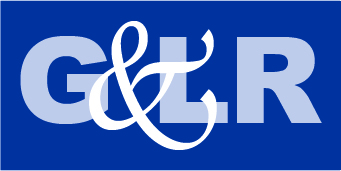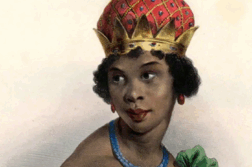“The Women’s Movement is a historical and cultural necessity. Homosexuality is a historical and cultural necessity, and homosexuality is an obvious and natural bridge between man and woman.” With this pronouncement in a speech delivered just one century ago, in Germany, Anna Rüling became the first known lesbian activist.
Until very recently, little had been known about the life of Anna Rüling.
She gave her interesting and expressive speech, “What Interest Does the Women’s Movement Have in Solving the Homosexual Problem?” in 1904 before the Scientific Humanitarian Committee. The Committee, the first gay organization in world history, was established in Berlin in 1896 by Magnus Hirschfeld. In her speech, Rüling brought homosexual rights and women’s rights together under one umbrella. She congratulated the Committee for its support of women’s rights and for including lesbians, along with homosexual men, in its fight for equal rights. The involvement of lesbians in the worldwide women’s movement continues to be as important an issue today as it was at the time of Rüling’s speech. At the outset of her speech, Rüling makes the point that women have been considered only as an afterthought in the fight for equal rights. Although she’s not complaining, she suggests that this is due to the absence of laws against the practice of sexual acts between women—men were not so lucky—which has kept women on the sidelines in the fight for sexual liberty. Rüling uses both the term “homosexuality,” which was coined by Karoly Maria Kertbeny in 1868, and the term “Uranism,” which was coined by Karl Heinrich Ulrichs in 1862. On the one hand, Rüling can be seen invoking many of the economic and social arguments that are still current today, notably when addressing the circumstances that perpetuate inequality between men and women in the workplace and in the home. She speaks about gender stereotypes whereby jobs are said to be fit for one of the sexes only. She questions the conventional gender roles in a way that a modern reader would not find out of place in a contemporary speech. On the other hand, Rüling’s remarks about conjugal unions between homosexuals and heterosexuals would be difficult for modern readers to accept, to say the least. Such a union, she maintains, would produce offspring doomed to join the ranks of the “weak-minded, idiotic, epileptic, chest-diseased degenerates of all sorts,” who would have “unhealthy sexual drives such as sadism and masochism.” Such comments must be understood in the context of the dominant perspective of the physicians and psychiatrists of her day, who diagnosed “homosexuality” and “Uranism” as a disorder likely to produce the kind of offspring that Rüling describes. While accepting this proposition, Rüling’s purpose is to discourage people from falling into the trap of heterosexual marriage when their instincts are leading them elsewhere. But Rüling sounds modern again when she points to the impossibility of changing a person’s sexual orientation by force or other means. She’s also sensitive to parents’ inability to know the sexual orientation of their children. And her advice to parents concerning problems related to the sexuality of their children is to offer them love and understanding. Finally, however, at the core of Rüling’s account is her very un-modern claim that “men, women, and homosexuals” constitute three distinct types of person. Like her contemporaries in biology and psychoanalysis, Rüling subscribed to the existence of a third sex, a kind of intermediate type that was neither male nor female. While the three types were seen to differ in their psychological makeup, Rüling, for her part, insisted that all three should have equal opportunities in education and in the job market. On balance, Rüling was clearly way ahead of her time with respect to gender equality and gay rights, and it is perhaps for this reason that her speech remained obscure through most of the last century. Simone de Beauvoir cited Rüling as a reference in her book Le Deuxième Sexe (The Second Sex), published in 1949. But only in recent decades has Rüling’s speech been revived and its importance recognized. Since my push in May 2003 for the recognition of the 100th anniversary of Rüling’s speech, three websites have put it online, one of them a translation into Italian. More significant, though, is the first biography of this “conflicted forebear of lesbian herstory,” by Christiane Leidinger, which was published in December 2003. Leidinger revealed that the name Rüling is a pseudonym of Anna Theo Sprüngli. Thanks to Leidinger, we now know the birth and death dates and important places, and even have photographs of Rüling. (Leidinger’s article appears in the Mitteilungen der Magnus Hirschfeld Gesellschaft. Refer to the website www.angelfire.com/fl3/uraniamanuscripts/anna.html for bibliographical information and links to relevant websites.) As a note of interest, Rüling’s own sexual orientation can only be deduced from the speech’s text in a roundabout way. At one point she refers to the widely-held belief that “in middle-class circles … homosexuality has no place,” and notes that her father subscribed to this conviction, having spoken once about homosexuality and declared that “nothing of the sort can happen in my family.” She then adds, a bit cryptically, to be sure: “The facts prove the opposite. I need to add nothing to that statement.” However archaic some of her ideas, Rüling deserves the attention of today’s gay and non-gay readership. Her notion that the women’s movement and the homosexual movement share a common cause has proven prophetic, even if it took until the 1960’s for both women and gay people to assert their claim to full equality. And since neither group has fully achieved that goal at the centennial of Anna Rüling’s speech, her arguments for the fundamental equality of all human beings, regardless of gender or sexual orientation, remain as relevant as ever.




